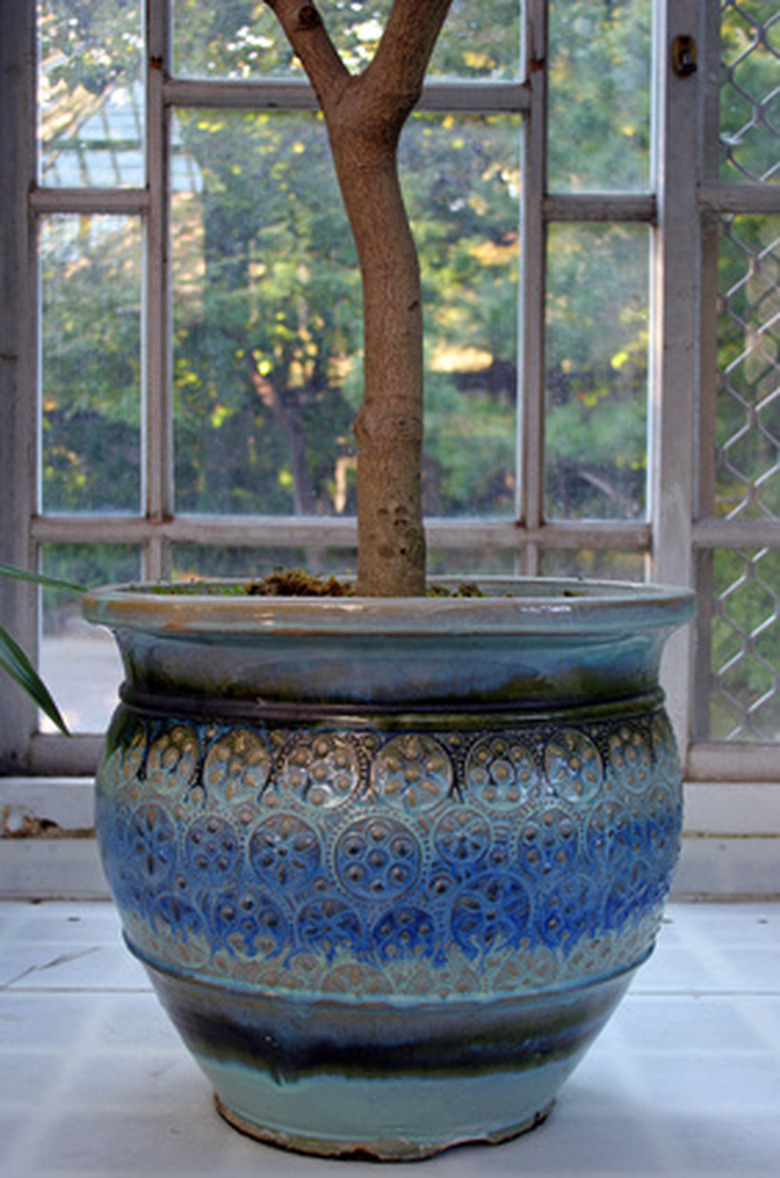Tree Planter Sizes
Those whose garden area is limited to a patio, porch or balcony need not confine themselves to flowers and herbs. Trees give strength, height and structure to a composition of pots and there are many that will adapt to containers with a little extra care. Though the Japanese have developed the art of bonsai, miniaturizing trees, to a fine art, most gardeners will want more substantial specimens in planters that give their roots room to grow.
Considerations
Choose planters to fit the space available as well as the type of tree you wish to grow. The size will depend on the present size of the tree, how fast it grows and its ultimate height. Larger containers need less attention to watering and fertilization than smaller ones and offer more protection from hard freezes.
Choosing A Tree
Your selection of tree will influence the size of container needed since, ideally, there should be about 2 cubic feet of space for every square foot of canopy, the width of the branches. Small trees such as dogwoods and dwarf apples are better suited to container growing than 50-foot red maples, for instance.
- Those whose garden area is limited to a patio, porch or balcony need not confine themselves to flowers and herbs.
- Choose planters to fit the space available as well as the type of tree you wish to grow.
A 2-year-old dogwood, however, will take four or five years to achieve the stature of a mature tree. If you are impatient, buy a faster growing tree and when it outgrows your space, pass it on to a friend with a yard to plant it in. You may also choose to plant a large shrub and prune it up into the shape of a tree.
Planter Materials
Light materials such as plastics offer portability but heavier ones such as wood and pottery give stability in high winds. With trees of borderline hardiness, choose thicker materials and make sure that the container is at least as wide as it is high for best protection. You can also add insulation to the inside of the planter before installing your tree.
Initial Container Selection
Once your choose your tree, it's time to choose a planter. Don't plant it into a pot that is much larger than the present root system since planter mix that sits at the edges without root growth can become waterlogged and sour. You may need to start with smaller, temporary containers before moving a tree into its final pot.
- A 2-year-old dogwood, however, will take four or five years to achieve the stature of a mature tree.
- You may also choose to plant a large shrub and prune it up into the shape of a tree.
When A Tree Outgrows Its Container
Once a tree's roots completely fill the planter and start to circle around inside, a condition known as being rootbound, you may choose to move it into a larger container, plant it in the ground or prune the roots back by a third and replant it in the same pot. This technique, known as root pruning, is used in the art of bonsai and will dwarf the tree somewhat but will not impair its health. Fill around the roots with new planting soil and do any pruning of the branches at the same time.
